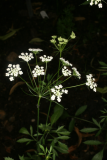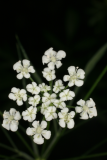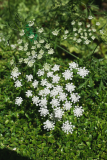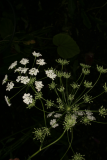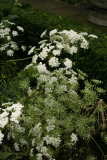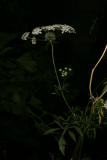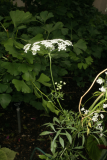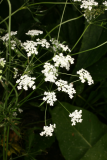Additional notes (click to expand)
Medicinal
Induction of photosensitivity. Contain psoralens which, taken orally or applied topically, cause photosensitivity. With ultraviolet light treatment (PUVA), they are used for treating psoriasis, mycosis fungoides and vitiligo.
Oakeley, Dr. H.F. (2013). Medicines from RCP plants label list 5-2013.docx.
Prescription only medicine: psoralens
Medicinal uses
Uses supported by clinical data
Treatment of skin disorders such as psoriasis and vitiligo (acquired leukoderma)
(1, 5, 18–26).
Uses described in pharmacopoeias and well established documents
Treatment of vitiligo (1).
Uses described in traditional medicine
As an emmenagogue to regulate menstruation, as a diuretic, and for treatment
of leprosy, kidney stones and urinary tract infections (6).
Contraindications
Fructus Ammi Majoris is contraindicated in diseases associated with
photosensitivity, cataract, invasive squamous-cell cancer, known sensitivity
to xanthotoxin (psoralens), and in children under the age of
12 years (29). The fruits are also contraindicated in pregnancy, nursing,
tuberculosis, liver and kidney diseases, human immunodefi ciency virus
(HIV) infections and other autoimmune diseases (22).
WHO Monographs on Selected Medicinal Plants. Vol. 3, 2007
Nomenclature
OTHER COMMON NAMES: COMMON BISHOP'S WEED; FALSE BISHOP'S WEED; HERB WILLIAM
The Royal Horticultural Society Horticultural Database, available at www.rhs.org.uk
Geographical distribution
- Africa, Northeast Tropical Africa, Ethiopia
- Africa, Northern Africa, Algeria
- Africa, Northern Africa, Egypt
- Africa, Northern Africa, Libya
- Africa, Northern Africa, Morocco
- Africa, Northern Africa, Tunisia
- Asia-Temperate, Arabian Peninsula, Kuwait
- Asia-Temperate, Caucasus
- Asia-Tropical, Indian Subcontinent, Pakistan
- Europe, Eastern Europe, Ukraine
- Europe, Southeastern Europe, Albania
- Europe, Southeastern Europe, Bosnia and Herzegovina
- Europe, Southeastern Europe, Greece
- Europe, Southeastern Europe, Italy
- Europe, Southwestern Europe, France
- Europe, Southwestern Europe, Portugal
- Europe, Southwestern Europe, Spain
Ammi majus L.
Family: APIACEAEGenus: Ammi
Species: majus L.
Common names: Bullwort; Bishop's Weed; Queen Anne's Lace
Pharmacopoeia Londinensis name: Ammi
Distribution summary: Mediterranean to Pakistan
Habit: Annual
Hardiness: H4 - Hardy; average winter
Habitat: Scrub and waste land
Garden status: Currently grown
Garden location: Pharmacopoeia Londinensis 1618 'Seeds & Grains' (HSE 7), Display bed (R), Olive tree bed (O), Horseshoe parterre by William Harvey house (G)
Flowering months: June, July, August, September, October
Reason for growing: Medicinal, other use, prescription only medicine
.JPG)
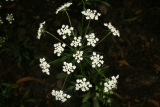
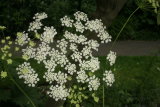
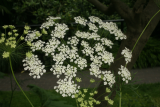
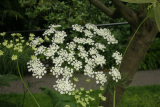
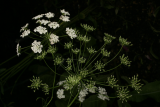
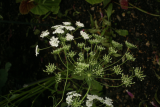
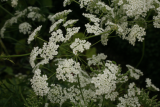
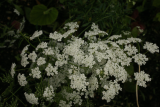
.JPG)
.JPG)
.JPG)
.JPG)
